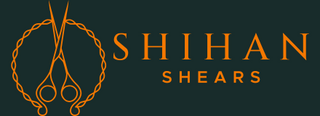Hair shears, also known as scissors, have a long and interesting history that dates back to ancient civilizations. The earliest known examples of hair shears were discovered in ancient Egyptian tombs and were made of bronze. These shears were used by hairdressers and barbers to cut and style hair, as well as to shave beards.

The formulation of bronze used to make these early hair shears was likely a combination of copper and tin. Bronze is a durable and strong material that was widely used in ancient times for a variety of purposes, including the creation of tools and weapons. The use of bronze for hair shears allowed for a more precise and controlled cut compared to using a knife or other crude cutting instrument.
As civilizations evolved, so did the materials used to make hair shears. The Romans developed shears made of iron, which were even stronger and more durable than bronze. Iron is a more abundant element than copper and tin, making it a more practical choice for widespread use. The use of iron for hair shears allowed for even greater precision and control in cutting and styling hair.
During the 18th and 19th centuries, hair shears underwent a significant transformation with the development of new manufacturing techniques. The invention of the steam engine and the Industrial Revolution led to the mass production of hair shears, making them more affordable and widely available to the general public.

The steel used to make these early mass-produced hair shears was likely an alloy of iron, carbon, and other elements. Steel is a strong and durable material that is able to hold a sharp edge for a long time, making it ideal for use in hair shears. The use of steel for hair shears allowed for even greater strength and precision in cutting, making it possible to achieve a wide range of hairstyles.
In the 20th century, hair shears continued to evolve with the introduction of new materials such as stainless steel and titanium. These materials provided even greater strength and durability, as well as resistance to corrosion. Stainless steel, in particular, is a popular choice for hair shears due to its ability to resist rust and maintain a sharp edge for a long time.
The use of new manufacturing techniques, such as laser cutting and computer-aided design, also allowed for the creation of more precise and ergonomic hair shears. These techniques allowed for the creation of hair shears with a more comfortable grip and a smoother cutting action, making it easier for hairdressers and stylists to work with them for long periods of time.
The evolution of hair shears was greatly impacted by the sword makers of Japan, who were known for their high-quality steel and their skills in forging and tempering blades. The Japanese steel used to make swords and other cutting tools was known for its exceptional strength and ability to hold a sharp edge for a long time. This steel was eventually incorporated into the production of hair shears, leading to a significant improvement in the quality and durability of these tools.
Today, high-quality hair shears are made from a variety of advanced materials, including stainless steel and titanium. These materials provide even greater strength and durability, as well as resistance to corrosion. Companies such as Saki Shears are known for producing some of the finest hair shears on the market, using only the highest-quality materials and advanced manufacturing techniques.
In addition to their use in hair salons and barbershops, hair shears are also popular among home stylists and DIY enthusiasts. With the proliferation of online tutorials and the rise of at-home beauty treatments, many people are opting to cut and style their own hair using hair shears.
There are many different types of hair shears available on the market today, each designed for specific cutting techniques and preferences. Some are designed for general use, while others are more specialized for tasks such as thinning or texturizing hair. There are also shears designed for different types of hair, such as thicker or coarser hair.
In addition to traditional straight-edged hair shears, there are also curved and serrated shears available. Curved shears are useful for cutting around the head and creating soft, flowing lines in the hair. Serrated shears have a toothed edge that helps to grip the hair and prevent slipping, making them useful for cutting through thick or unruly hair.
The invention and evolution of hair shears has been a long and fascinating journey that has seen these tools evolve from simple bronze instruments to modern, precision-engineered tools made of advanced materials. The role of Japanese steel and the sword makers of Japan has had a significant impact on the quality and durability of hair shears, and companies such as Saki Shears continue to push the boundaries of what is possible with these essential tools. From their use in ancient civilizations to their widespread adoption in the modern world, hair shears have played a vital role in the history of hairstyling and continue to be an essential tool for hairdressers and stylists around the world.

